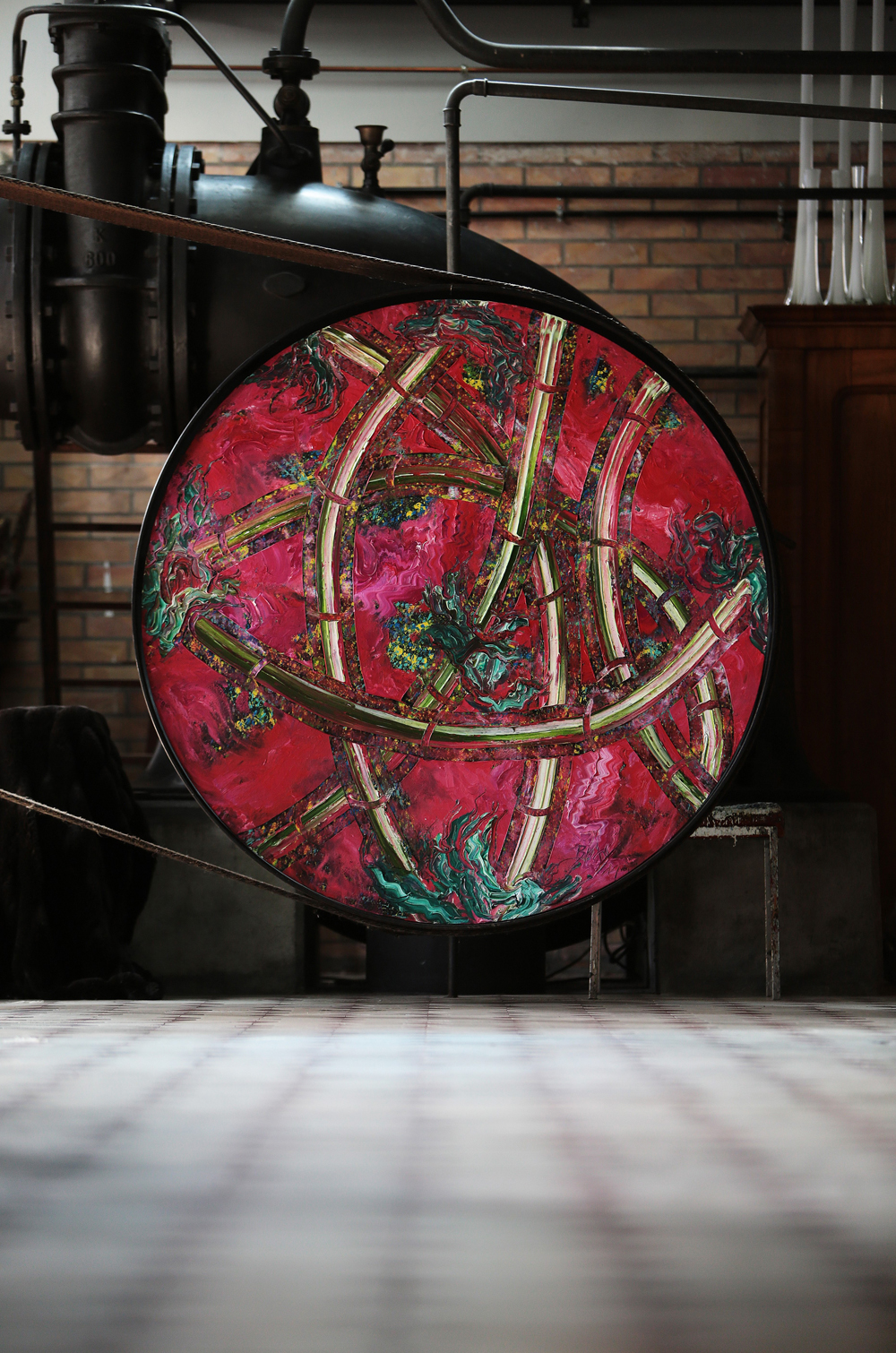The district of Neckarau is by no stretch of the imagination Mannheim’s prettiest area. Industrial estates and business parks characterize this area on the banks of the Rhine, and blocks of flats cower in the shadow of an imposing power station. Few visitors will suspect that this location is home to a valuable historic monument. And yet, when the wide entrance gate of the former wastewater pumping station opens, visitors are astonished to fi nd an elevenmeter-high, elaborately decorated brick building that spans a length of thirty-five meters. Its half-round arched windows are more reminiscent of a church than they are of an industrial structure. Camellias, bamboo plants, irises, and magnolias grow in a lovingly maintained garden. Can it be true that stinking sewers ran through the property until 1986?
Mathias Heinrich explains the contrast between the ignoble use and the sophisticated appearance thus: “One hundred years ago, waterworks were similar to what glass-walled car-production plants are to the present day” – high-tech architecture in a contemporary design. The architect (...) planned and supervised the repurposing of the industrial estate. Credit for the salvation of the building constructed in 1903 must go to the artist Dietmar Brixy, however. (...)
Volker Lehmkuhl,
journalist monument conservation




